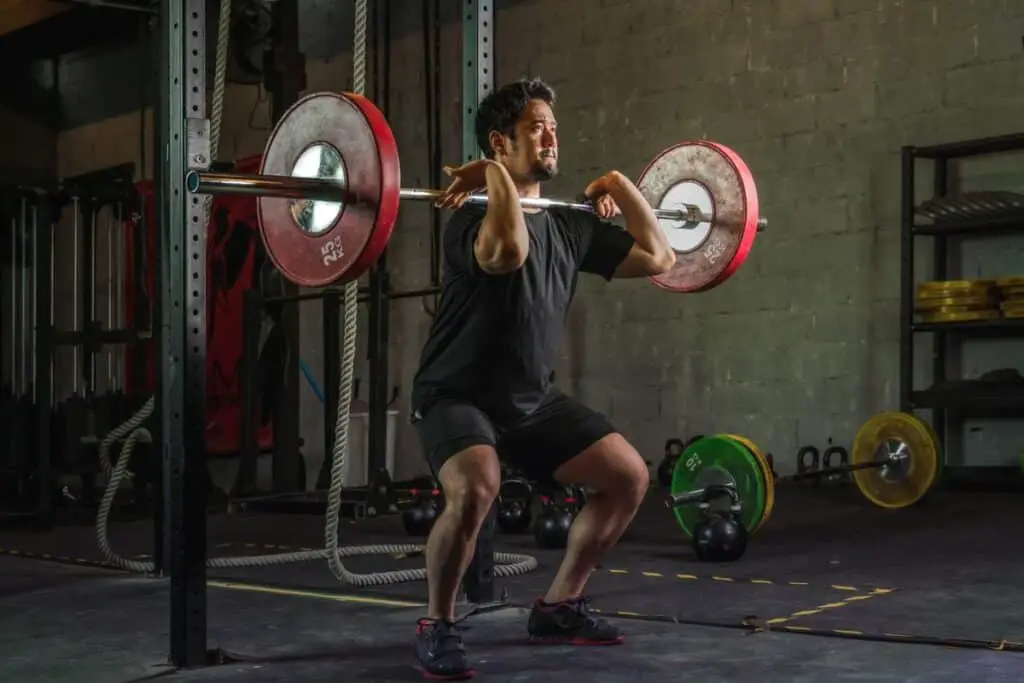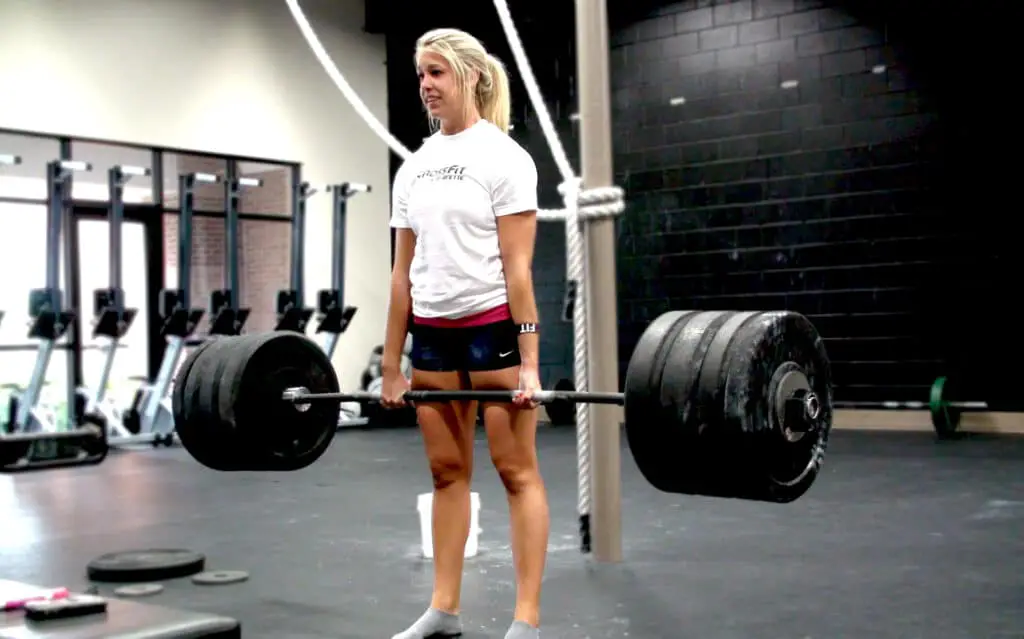Introduction
What Is Volume In Weightlifting: In weightlifting and strength training, the concept of “volume” is a cornerstone that holds the key to unlocking your fitness potential. Beyond the sheer number of reps and sets, volume is a dynamic and multifaceted aspect of training that dictates the outcomes of your hard work. Understanding volume in weightlifting is akin to understanding the blueprint of your progress, and it plays an instrumental role in sculpting not only your physique but also your performance.
Volume is the quintessential measure of the total work done during a weightlifting session, encapsulating the synergy between the number of sets, repetitions, and the load lifted. It’s a crucial element in the delicate balance of exercise intensity and duration, directly impacting how your body responds to the training stimulus. In the pursuit of muscular hypertrophy, volume is your ally, as it places significant stress on the muscle fibers, fostering their growth and resilience. But it’s not merely about lifting heavier weights or performing endless reps; volume must be finely tuned to maximize results while preventing overtraining and injury.
In the journey of a weightlifter, volume serves as the compass that guides training progression and adaptation. Whether you’re striving to build lean muscle, increase your strength, or enhance your athletic performance, the manipulation of training volume is the linchpin of success. It’s a concept that extends beyond mere numbers; it’s an art and science that empowers you to systematically evolve and excel in the world of weightlifting.

Is volume better for muscle growth?
The greater the volume results in a larger effect of muscle fibres leading to an increase in muscle growth. If your training volume is too low, your body won’t adapt or grow and if your training volume is too high, you run the risk of overtraining and becoming injured.
Volume and Muscle Stress: Volume, often represented as the total amount of work performed (sets, repetitions, and weight), is essential for creating the necessary stress on your muscles to stimulate growth. The higher the volume, the more stress your muscles experience, which can lead to greater muscle hypertrophy. This is because the stress from resistance training causes micro-tears in the muscle fibers, which, during the recovery process, results in muscle growth.
Time Under Tension: Volume is linked to the time your muscles spend under tension during a workout. Longer sets with more repetitions or more sets with shorter rest intervals increase the time your muscles are working. This prolonged time under tension is associated with muscle hypertrophy.
Progressive Overload: To stimulate muscle growth, you need to progressively increase the volume over time. As your muscles adapt to a certain level of stress, you must continually challenge them with more weight, more sets, or more repetitions to elicit further growth.
Is it better to lift heavy or volume?
So, in general, low reps with heavy weight tends to increase muscle mass, while high reps with light weight increases muscle endurance. This doesn’t mean that you have to rely on one method exclusively. Alternating between the two may be the best approach for long-term success.
Lifting Heavy with Low Volume
Strength and Power: Lifting heavy weights with low repetition and high intensity is excellent for building maximal strength and power. It’s ideal for athletes in sports like powerlifting and weightlifting.
Neurological Adaptations: Heavy lifting recruits a significant number of motor units and leads to neural adaptations, improving your ability to generate force.
Muscle Recruitment: It can help recruit more muscle fibers and promote myofibrillar hypertrophy, which increases the size and strength of muscle fibers.
Time Efficiency: Workouts involving heavy weights and low reps can be shorter, making them more time-efficient.
Lifting Moderate to Light Weights with High Volume
Muscle Hypertrophy: This approach is well-suited for individuals looking to build muscle size (muscle hypertrophy). The higher volume and time under tension encourage muscle growth.
Endurance and Fatigue Resistance: High-volume workouts can improve muscular endurance and your ability to sustain effort over longer durations.
Injury Prevention: Lower weights with higher volume may be gentler on your joints, making them a safer option for those with joint issues or injuries.
Metabolic Effects: High-volume workouts can elevate your heart rate and metabolism, potentially aiding in calorie burning and fat loss.
What is the best volume for strength?
Generally speaking, the more volume we can perform and recover from, the faster we will achieve strength and muscle growth. For most intermediates/advanced, 10-20 sets per week per muscle group is considered optimal. By “working sets” we mean sets that are taken to within around 4-5 reps of failure.
Low to Moderate Repetitions: For building strength, it’s common to use lower to moderate repetition ranges. This typically means working in the range of 1 to 6 repetitions per set. This allows you to lift heavy weights, which is a primary driver of strength gains.
Multiple Sets: Strength training often involves multiple sets of each exercise. Three to five sets per exercise are common, but the specific number can vary based on your program and goals.
Adequate Rest Between Sets: To maximize strength gains, you should allow sufficient rest between sets, typically 2 to 5 minutes. This ensures you recover enough to lift near-maximal weights for each set.
Compound Exercises: Emphasize compound exercises that engage multiple muscle groups, such as squats, deadlifts, bench presses, and overhead presses. These exercises are highly effective for building overall strength.
Progressive Overload: Gradually increase the weight you lift over time. Progressive overload is a key principle for strength development. As you get stronger, you should lift heavier weights or perform more repetitions with the same weight.
Frequency: Training frequency can vary, but working each muscle group or movement pattern at least two to three times a week can be effective for building strength. This may involve full-body workouts or specific muscle group splits.
Variation: To prevent plateaus and keep your workouts engaging, consider rotating exercises, intensity, and rep ranges periodically.
Form and Technique: Always prioritize proper form and technique to minimize the risk of injury and maximize strength gains.
What is better intensity or volume?
Although your muscle fibers don’t contract quite as hard on any individual rep, they do so for twice as long, producing about the same amount of total tension. Thus, technically, volume is the primary driver of muscle growth, because it’s the volume of tension over time that makes your muscles bigger.
Intensity
Strength and Power: High-intensity workouts, which involve lifting heavy weights for low repetitions, are highly effective for building strength and power. If your primary goal is to increase your one-rep max (the maximum weight you can lift for a single repetition), intensity is the key.
Neurological Adaptations: High-intensity training recruits more motor units and leads to neural adaptations, which enhance your ability to generate force. It’s particularly important for athletes in strength sports like powerlifting and weightlifting.
Shorter Workouts: High-intensity workouts can be relatively short due to the heavy weights and low reps, making them time-efficient.
Myofibrillar Hypertrophy: Intensity is associated with myofibrillar hypertrophy, which increases the size and strength of muscle fibers. This type of hypertrophy is characterized by denser, stronger muscles.
Volume
Muscle Hypertrophy: High-volume workouts, involving moderate to lighter weights with more repetitions, are effective for building muscle size (muscle hypertrophy). If you’re looking to increase the size and definition of your muscles, volume is crucial.
Endurance and Fatigue Resistance: High-volume workouts can improve muscular endurance and your ability to sustain effort over longer durations.
Injury Prevention: Lower weights with higher volume are generally gentler on your joints, making them a safer option for individuals with joint issues or injuries.
Metabolic Effects: High-volume workouts can elevate your heart rate and metabolism, which may aid in calorie burning and fat loss.
How can I increase my training volume?
By adding an endurance workout to your day you’ve increased your training volume without adding too much training stress. Any workout under an hour, in this zone, is an easy addition. You can use TrainNow to find additional endurance workouts fit specifically for you and your current fitness.
Progressive Overload: Gradually increase the weight you lift or the intensity of your workouts. This is the foundation of increasing training volume. Whether you’re lifting heavier weights or adding more resistance, progression is essential for growth.
Add Sets: Increase the number of sets you perform for a particular exercise. For example, if you’ve been doing three sets of squats, increase it to four or five sets. More sets can increase the training volume, provided you maintain proper form and don’t compromise on intensity.
Add Repetitions: Increase the number of repetitions you perform within a set. For instance, if you’ve been doing 8-10 repetitions per set, aim for 12-15 repetitions. This can help you increase time under tension and stimulate muscle growth.
Increase Workout Frequency: Train each muscle group or movement pattern more frequently. Instead of working a muscle group once a week, consider working it two or three times a week. This approach can lead to more overall training volume.
Change Rest Periods: Adjust the rest periods between sets and exercises. Shortening the rest between sets can create more metabolic stress, and lengthening it can help with recovery between high-intensity sets.
Incorporate Supersets and Drop Sets: Supersets involve performing two exercises back-to-back without rest, while drop sets involve reducing the weight and continuing the set. Both techniques can increase training volume by intensifying your workout.
Use Compound Exercises: Compound exercises, which engage multiple muscle groups, naturally increase training volume due to their complexity and the number of muscles involved. Exercises like squats, deadlifts, and bench presses are excellent choices.
Increase Workout Duration: Extend the duration of your workouts. However, this should be done in a structured way to avoid overtraining. Gradually add more exercises or sets over time.
Periodization: Implement a periodization strategy in your training plan, which involves cycling through phases of different volume and intensity. This can help you avoid plateaus and continually increase training volume.
Monitor Progress: Keep a training log to track your sets, repetitions, and weights. Regularly review your training log to ensure you’re consistently progressing and increasing training volume.
Nutrition and Recovery: Proper nutrition and adequate recovery are essential for supporting increased training volume. Ensure you’re consuming enough calories and nutrients to fuel your workouts, and prioritize sleep and rest to aid in recovery.
Consult a Professional: Consider working with a fitness professional or personal trainer to design a structured training program that aligns with your goals and progressively increases training volume in a safe and effective manner.
How much volume is good for gym?
While more scientific studies are needed to reinforce the current body of literature, current research points towards the optimal training volume for muscle growth (for most of us) to be around 6-12 hard working sets per muscle group per session.
Strength and Power: If your primary goal is to build strength and power, focus on lower repetitions (typically in the range of 1 to 6 reps per set) and higher weights. You’ll generally perform fewer sets per exercise (e.g., 3 to 5 sets). The key is to lift heavy with proper form and ensure adequate rest between sets (2 to 5 minutes) to maintain intensity.
Muscle Hypertrophy (Muscle Growth): For those looking to build muscle size (muscle hypertrophy), higher volume is generally more effective. Use moderate to lighter weights and aim for higher repetitions (e.g., 8 to 12 reps per set) with more sets (e.g., 3 to 5 sets per exercise). Rest periods can be shorter (30 seconds to 1 minute) to keep the muscles under tension for longer.
Endurance and Fat Loss: If your goal is to improve muscular endurance and burn calories, you can incorporate even higher volume workouts with lighter weights and more repetitions (e.g., 12 to 20 reps per set). Circuit training and metabolic conditioning workouts are examples of routines with high volume and shorter rest intervals.
Sport-Specific Training: Athletes in specific sports may require different volumes to match the demands of their sport. For instance, endurance athletes may emphasize high-volume, low-weight training, while power athletes may focus on high-intensity, low-volume workouts.
Beginners vs. Advanced: Beginners may start with lower volume to adapt to exercise and improve technique. As you become more experienced, you can progressively increase the volume. However, advanced lifters may also benefit from periodization, cycling between phases of high and low volume.
What is a good muscle mass level?
According to Withings, normal ranges for muscle mass are: Ages 20-39: 75-89 percent for men, 63-75.5 percent for women. Ages 40-59: 73-86 percent for men, 62-73.5 percent for women. ages 60-79: 70-84 percent for men, 60-72.5 percent for women.
Body Composition: The amount of muscle mass you should have depends on your overall body composition. Your muscle mass should ideally make up a significant portion of your lean body mass, as opposed to body fat. A body composition measurement like body fat percentage can provide a better understanding of your muscle-to-fat ratio.
Age and Gender: Muscle mass tends to naturally decrease with age, especially after the age of 30. Additionally, men generally have a higher potential for muscle mass compared to women due to differences in hormones. Therefore, age and gender play a role in determining what is considered a healthy muscle mass level.
Fitness Goals: Your ideal muscle mass can vary based on your fitness goals. For example, bodybuilders and strength athletes may aim for higher levels of muscle mass compared to someone with a focus on general fitness or weight loss.
Health and Functionality: A good muscle mass level should also support your health and functional fitness. Having adequate muscle mass is essential for maintaining strength, mobility, and overall physical well-being. It can help protect against age-related muscle loss (sarcopenia) and related health issues.
Individual Preferences: Ultimately, your ideal muscle mass level can be influenced by personal preferences and your perception of what makes you feel healthy, confident, and comfortable in your body.
Is high volume good for strength?
If we add these together we get 675 + 1125 + 945 + 810 + 3400 = 6955 pounds of volume. Studies have generally confirmed that volume is one of the primary concerns in training for strength and hypertrophy. That is, as volume increases, we tend to get bigger and stronger unless something else is holding us back.
Volume Defined: Volume in the context of strength training refers to the total amount of work you perform in a workout. It’s typically calculated as sets x reps x weight lifted. For example, if you do 3 sets of 5 reps with 100 pounds, your total volume for that exercise is 1500 pounds (3 sets x 5 reps x 100 pounds).
Strength vs. Hypertrophy: High volume training can be more associated with muscle hypertrophy (muscle growth) rather than pure strength gains. This is because higher volume typically means more time under tension and a greater stimulus for muscle growth.
Strength vs. Endurance: Low to moderate volume with heavy weights (high intensity) is often used for strength development. Lifting heavy weights for fewer repetitions with adequate rest between sets focuses on training your nervous system and improving your ability to lift heavy loads.
Progressive Overload: Regardless of the volume, progressive overload is key for strength gains. This means gradually increasing the weight you lift over time. You can do this in high-volume programs or lower-volume ones.
Individual Variability: Everyone responds differently to training. Some people may see substantial strength gains with high-volume training, while others may respond better to low-volume, high-intensity training. It often depends on your genetics, training history, and individual preferences.
Periodization: Many effective strength training programs incorporate periodization. This means cycling through different training phases, including high-volume phases for hypertrophy and lower-volume phases for strength. This approach can be beneficial for overall strength development.

Conclusion
Volume emerges as the silent architect behind the sculpted physiques, the feats of strength, and the relentless pursuit of fitness goals. It’s more than the sum of sets, reps, and weights; it’s a dynamic force that shapes the trajectory of a lifter’s journey. By mastering the art of volume in weightlifting, athletes can design their paths to success, whether they aim to gain muscle, enhance strength, or achieve their athletic aspirations.
The power of volume lies in its ability to harmonize the intensity and duration of workouts, ensuring that the body is challenged, but not overstrained. It allows lifters to tailor their routines to match their goals and continually adapt as they progress. Volume plays a critical role in periodization, enabling systematic and strategic adjustments in training load to maximize results while avoiding plateaus and burnout.
The concept of volume is not merely an abstract notion in weightlifting; it’s the pulse of progress. With a deep understanding of this fundamental aspect of training, individuals can harness its potential to forge their own paths toward strength, growth, and success in the dynamic world of weightlifting.

